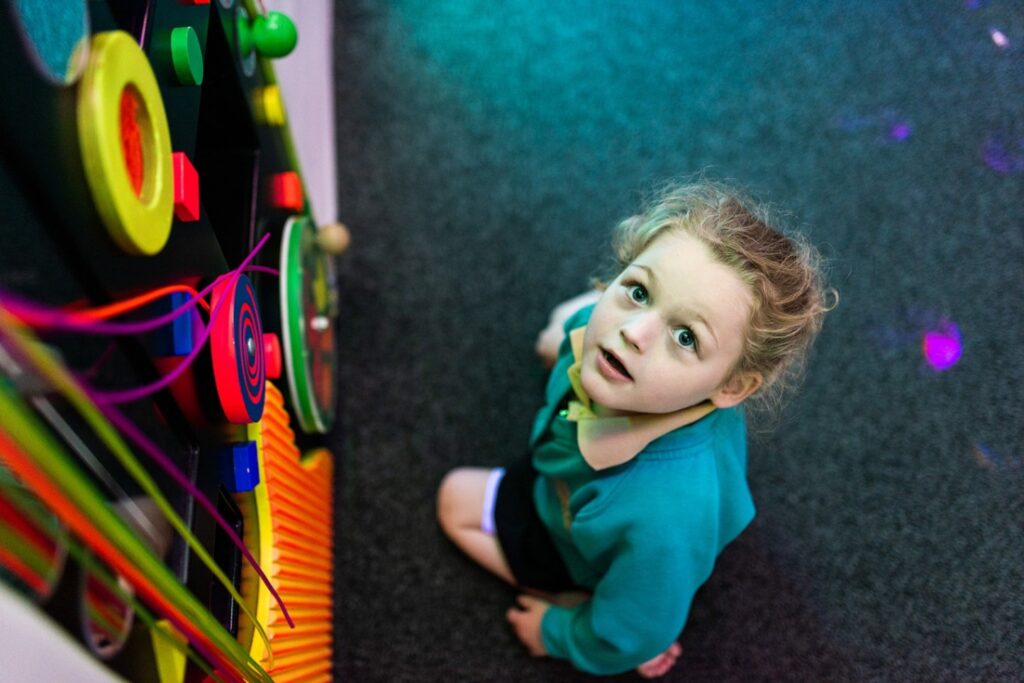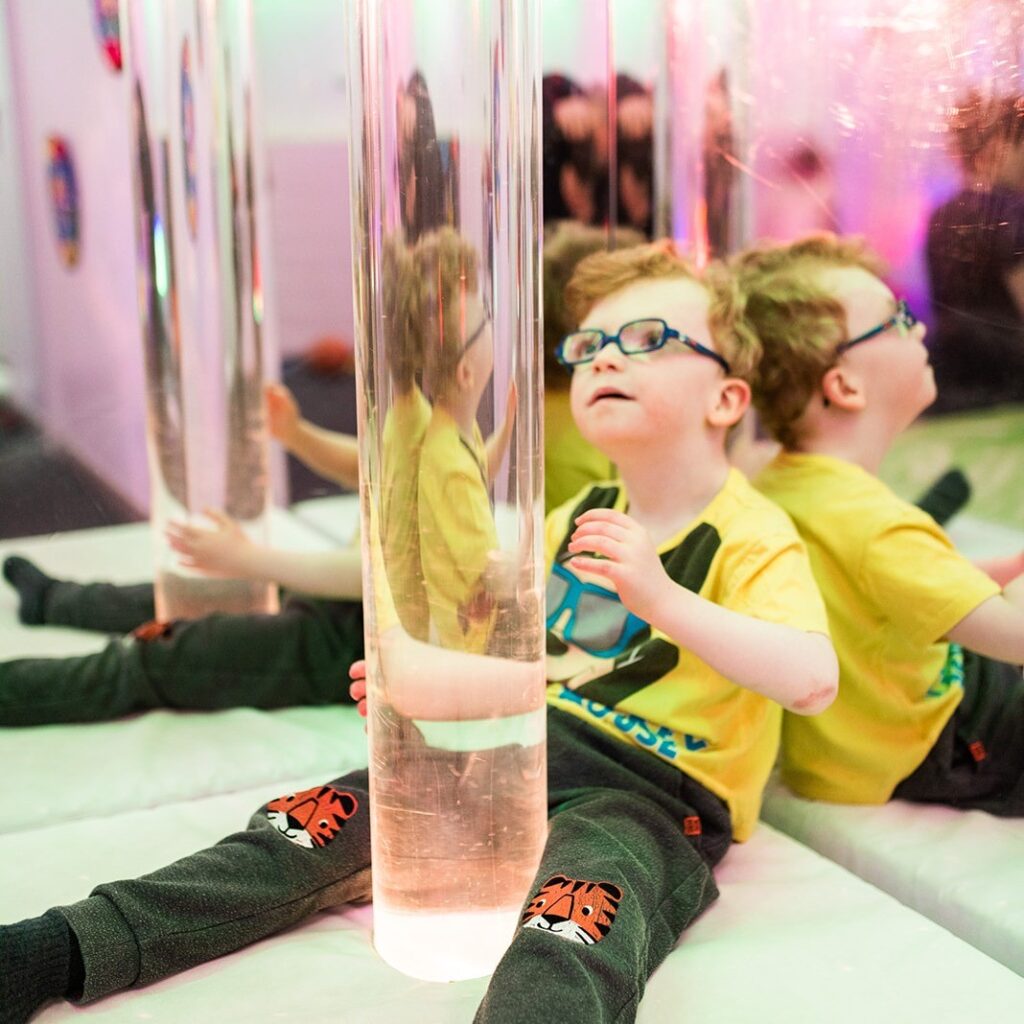Sensory Room
The sensory room is a specially designed room which combines a range of stimuli to help children develop and engage their senses. Our sensory room includes lights, colours, sounds, sensory soft play objects and aromas all used within a safe environment that allows the children using it to explore and interact without risk.
Sensory rooms can help children with learning difficulties and sensory impairments to learn to interact with the world around them, but in a safe environment that builds up their confidence and their ability. The children have access to an unrestrained, non-threatening space where they can explore at their own leisure. This freedom allows a valuable opportunity for teachers to observe children to see what calms them, rouses them and what they do or don’t like.
Benefits of the sensory room
There are a whole host of benefits of a sensory room for all the children at Highbury. Some of these include:
Sensory stimulation
Encouraging children to engage with and explore the environment can have positive effects on their ability to understand, react and interact with the larger world around them.

Enhance learning through play
Sensory play helps children to develop their senses, encourages problem solving and can build nerve connections in the brain. Sensory stimulation also engages different areas of the brain, helping children absorb and retain more information.
Improve balance, movement and spatial orientation
Sensory rooms can help develop children’s visual processing abilities as well as their fine and gross motor skills, facilitating day-to-day living. This is particularly beneficial for individuals with physical difficulties or Cerebral Palsy
Develop communication skills
For some children, particularly those with autism spectrum disorder, both verbal and non-verbal communication is a challenge. Interactive sensory rooms can help to engage withdrawn children and sensory equipment that focuses on sound can be especially helpful in encouraging vocalisation.
De-stress
Sensory environments can be highly absorbing, providing a moment of comfort and calm for overactive and anxious children. Similarly, the safe and controlled nature of a sensory room can help withdrawn children feel comfortable enough to interact with their surroundings.




